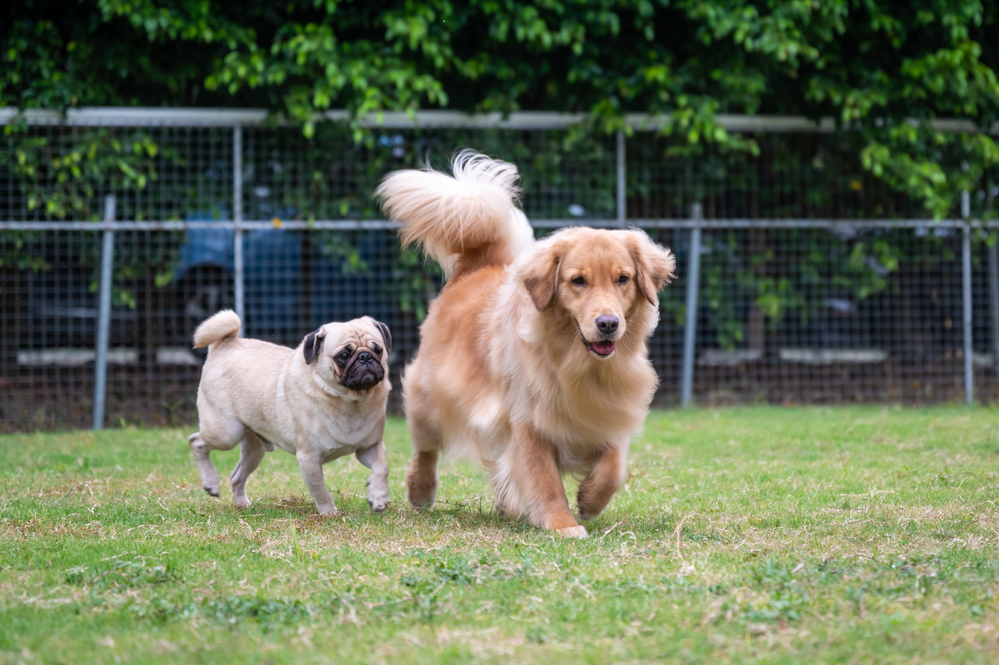
Many dogs have behavioral problems related to fearfulness.
These can include:
- Fear of loud noises
- New situations
- Heights
- Slippery surfaces
A study at the University of Helsinki in Finland examined the behaviors of 14,000 dogs and found that a more active lifestyle can help to reduce fearfulness in dogs, resolving many behavioral problems that result.
Fearfulness in dogs and behavioral problems that can result are stressful for both the dogs and their owners. So how can physical exercise help to reduce fearfulness in dogs?
How Does Physical Exercise Improve Dogs’ Mood?
In humans, exercise releases endorphins in the brain, which reduce stress levels and boost a good mood. Physical activity can therefore help relieve symptoms of anxiety and depressed moods as well as improve self-esteem. The same is actually true for dogs as well. Physical exercise can help improve a dog’s mood. Plus, dogs are generally social animals and enjoy activities done with their owners.

How Does Socialization Help Reduce Fearfulness?
Dogs that aren’t well socialized may have greater fears of unknown situations and people or other dogs. Properly socializing dogs can help to introduce them to new situations, people, and other dogs and give them the skills they need to face new situations. Physical activity may help with socialization as well when done outside. Taking a dog for a walk may introduce the dog to new situations and surroundings. Taking a dog to a dog park could encourage socialization with other dogs and people.

What Factors Influence Fearfulness in Dogs?
Physical activity or lack thereof isn’t the only factor that determines whether or not a dog will be fearful. A more physical lifestyle in dogs won’t necessarily eliminate fearfulness although it can help reduce the effects. Breed and environmental factors can also influence fearfulness in dogs. For example, smaller dogs were found to be more likely to be fearful than larger dogs.
Factors that can affect fearfulness include:
- Breed
- Whether the owner is a first-time owner
- Gender
- Whether the dog has been neutered
- Environment
- Socialization
- Size
The fact that breed can affect fearfulness indicates that some amount of fearfulness may be hereditary.
How Does Environment Affect Dogs’Fearfulness?
The University of Helsinki study also found that the environment has an impact on whether or not a dog is fearful. Dogs living in urban areas are more likely to be fearful than those living in rural areas. The researchers in the University of Helsinki study suggested that an urban environment had a higher population density of both humans and other dogs and that the urban environment was much more hectic.




